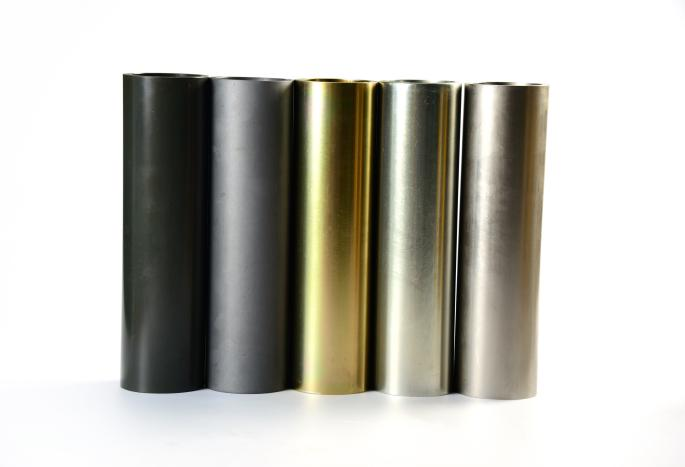 The cold brittleness (or low-temperature embrittlement tendency) of cold rolled tubes during use is represented by the toughness brittleness transition temperature Tc. The Tc of high-purity iron (0.01% C) is at -100C, and below this temperature, it is completely in a brittle state. Most alloy elements in cold-rolled precision bright steel pipes increase the toughness brittleness transition temperature of cold-rolled precision bright steel pipes, increasing the tendency for cold brittleness. When ductile fracture occurs above room temperature, the fracture surface of cold-rolled precision bright steel pipes is a dimple shaped fracture, while when brittle fracture occurs at low temperature, it is a cleavage fracture.
The cold brittleness (or low-temperature embrittlement tendency) of cold rolled tubes during use is represented by the toughness brittleness transition temperature Tc. The Tc of high-purity iron (0.01% C) is at -100C, and below this temperature, it is completely in a brittle state. Most alloy elements in cold-rolled precision bright steel pipes increase the toughness brittleness transition temperature of cold-rolled precision bright steel pipes, increasing the tendency for cold brittleness. When ductile fracture occurs above room temperature, the fracture surface of cold-rolled precision bright steel pipes is a dimple shaped fracture, while when brittle fracture occurs at low temperature, it is a cleavage fracture.
The reason for low-temperature embrittlement of cold rolled bright tubes is:
(1) When the dislocations generated by the dislocation source during deformation are blocked by obstacles (such as grain boundaries or second equivalences), local stress exceeds the theoretical strength of cold-rolled precision bright steel pipes, resulting in microcracks.
(2) Several stacked dislocations form a microcrack at the grain boundary.
(3) Reaction at the intersection of two slip bands, causing immovable dislocations% 26lt; 010% 26gt, with a wedge-shaped microcrack that can crack along the cleavage plane.
The factors affecting the cold brittleness of cold rolled bright tubes include:
(1) Solid solution strengthening elements. Phosphorus increases the toughness brittleness transition temperature more strongly; There are also molybdenum, titanium, and vanadium; When the content is low, the effect is not significant, while when the content is high, the elements that increase the toughness brittleness transition temperature include silicon, chromium, and copper. The elements that decrease the toughness brittleness transition temperature include nickel, and the elements that first decrease and then increase the toughness brittleness transition temperature include manganese.
(2) Elements that form the second phase. The most important element for increasing the cold brittleness of cold-rolled precision bright steel pipes with the second phase is carbon. As the carbon content in cold-rolled precision bright steel pipes increases, the pearlite content in cold-rolled precision bright steel pipes increases. On average, for every 1% increase in pearlite volume, the toughness brittleness transition temperature increases by 2.2 ℃ on average.
(3) The effect of carbon content on brittleness in ferritic pearlite steel. The addition of microalloying elements such as titanium, niobium, and vanadium forms dispersed nitrides or carbonitrides, causing an increase in the toughness brittleness transition temperature of cold-rolled precision bright steel pipes.
(4) The grain size affects the toughness brittleness transition temperature, and as the grain coarsens, the toughness brittleness transition temperature increases. Refining the grain size reduces the tendency of cold brittleness in cold rolled precision bright steel pipes, which is a widely used method.
Post time: Sep-01-2023

